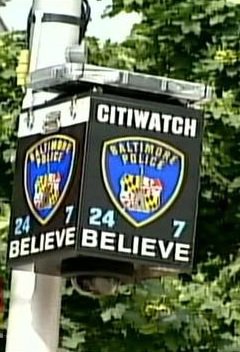
SecurityHive Editorial Note: This story highlights the need for better understanding of available affordable video storage solutions available today. The lack of long-term video retention is inexcusable with various solutions available today. (See SecurityHive’s Storage section for such examples.)
Kevin Rector
The Baltimore Sun
A decision to save surveillance video of Freddie Gray’s arrest and the subsequent unrest in the city has significantly reduced the storage capacity of some cameras on Baltimore’s closed-circuit system – shrinking the window during which police may flag footage to help with criminal investigations.
Capacity on some of the city’s 700 CitiWatch cameras has been reduced from 28 days to three, meaning footage of any illegal activity is wiped clean after 72 hours unless a police officer shows up to save it, city officials said. The capacity of other cameras has been reduced to a lesser degree.
City attorneys made the decision to save the footage because it could prove critical in future litigation related to Gray’s death or the crimes committed during the unrest, a spokesman for Mayor Stephanie Rawlings-Blake said.
Spokesman Kevin Harris said the intention was “to make sure that all records pertaining to the entirety of the Freddie Gray incident are preserved.”
Harris said officials examined all options to avoid interfering with CCTV surveillance or violating regulatory requirements and decided that cutting the capacity on some cameras was the best choice.
Other options, such as copying the information onto external hard drives or saving to a cloud-based storage system, were not feasible, he said, in part because they would involve temporarily stopping the cameras from recording, “potentially leaving a blind spot in the crime fight.”
Harris said the city plans to spend $140,000 on new hardware for long-term storage. The city does not know when the new hardware will be in place, he said, but Rawlings-Blake “has ordered that all red tape be cut to expedite the process as quickly as possible.”
Police have relied on CCTV footage to make arrests in more than 1,000 cases a year, according to data kept by the city.
Grant Fredericks, an instructor of video sciences at the FBI National Academy, said it’s important to save footage from incidents such as Gray’s arrest and the riots.
“That now becomes critical data,” Fredericks said. “All of it is evidence, and the authorities should secure all of that information.
“If anyone is charged in the future and that evidence is allowed to be erased, then the defendant can argue that exculpatory evidence was lost. And if that is lost, because the managers of the system or the government that is maintaining the system failed to retain the evidence, then the defendant can argue that the prosecution is prejudicial because they allowed the evidence to be erased.”
Fredericks said retaining even several thousand hours of footage should not disrupt the capacity of a modern city’s CCTV system. Storage — on external hard drives or otherwise — has become cheap, he said, and should be in place before the need becomes critical.
City Councilman Brandon Scott, vice chairman of the Public Safety Committee, said questions about storage capacity have come up during the debate over body cameras for police. He said the CCTV storage shortage shows a need to modernize Baltimore’s digital capabilities.
“We don’t want to have an incident where we need the data but we don’t have it because we had nowhere to store it,” he said. “That creates an emergency situation.
“Are we going to store it on a cloud? Are we going to store it on a server? Those are all conversations we need to have.”
Harris declined to provide dates or locations for the footage the city has decided to retain on the CitiWatch system.
Capt.
Eric Kowalczyk, a police spokesman, would not say how many cameras have lost capacity or where they are located.
Source: baltimoresun.com
